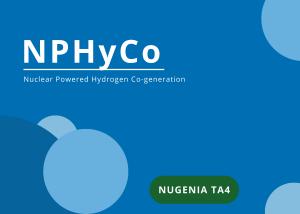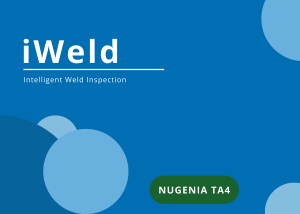Project Portfolio
Search within our projects by using the filters below. To access finished projects please click here.
Rethink a simpler, more cost-competitive ESFR-SMR design that is safe and sustainable in terms of resources, assess the impact of alternative technologies, such as metallic fuel and compact secondary system design, on safety and cost-competitiveness...
Development and improvement of High Performance Computing simulation tools for fuel element behavior in Gen2&3 nuclear reactors, integration of this advanced simulation approach in the industrial framework
The topic of pool scrubbing is of major relevance both in Boiling Water Reactors and Pressurized Water Reactors as it plays a vital role in mitigating the source-term to the environment by retention of fission products passing through water pools.
The topic of pool scrubbing is of major relevance both in Boiling Water Reactors and Pressurized Water Reactors as it plays a vital role in mitigating the source-term to the environment by retention of fission products passing through water pools.
The objective of the GEMINI 4.0 project is to demonstrate that the high temperature nuclear cogeneration system developed in GEMINI+ can provide a global solution for the competitive and safe decarbonization of industrial activities.
HARPERS main objective is to establish and clarify the benefits and added value of more aligned and harmonised regulations, practices and standards in decommissioning and radioactive waste management, including possibilities for shared processing, storage and disposal facilities between Member States (MS).
The global objective of the ANSELMUS project is to support the deployment of Heavy Liquid Metal (HLM) cooled advanced reactors in Europe.
The key objective of SASPAM-SA is to investigate the applicability and transfer of the operating large-LWR reactor knowledge and know-how to the near-term deployment of integral PWR (iPWR), in the view of Severe Accident (SA) and Emergency Planning Zone (EPZ) European licensing analyses needs.
The global objective of MIMOSA is to develop an accessible, cost/risk optimised multi-recycling strategy of LWR spent fuels in the EU, based primarily on multi-recycling of Pu (and Reprocessed U) in LWRs combined with the Cl MSR, using already available infrastructure in the EU.
The global objective of SEAKNOT is to Manage, exploit and assess knowledge in the Severe Accident (SA) field.
The global objective of TANDEM is to address SMR safety issues related to the light-water SMR integration.
The global objective of the iWeld project is to transform the practice of ultrasonic inspection of thick welds across several industry sectors, building upon recent advances in the nuclear energy context and the versatility of artificial intelligence.
The overall objective of GO-VIKING is to increase the expertise and improve the tools and skills of the European nuclear stakeholders for the analysis of complex FIV phenomena.
The main objective of ASSAS is to develop a proof-of-concept for a basic-principles severe accident simulator, that will feature a generic western-type PWR.
The overall objective of the Management and Uncertainties of Severe Accident (MUSA) project is to assess the capability of SA codes when modelling reactor and SFP (Spent Fuel Pool) accident scenarios of Gen II and III.
TeaM Cables aims at providing NPP operators with a novel methodology for efficient and reliable NPP cable ageing management.
STRUMAT-LTO addresses remaining gaps and open issues in RPV embrittlement to support safe long-term operation of LWR NPPs, including the scenario of LTO > 60 years.
The outcome of ACES will support the long-term operation of nuclear power plants, by using more realistic approaches for the integrity assessment of reinforced concrete SCC’s and provide evidence by large scale tests.
One of the most limiting safety assessments for long term operation (LTO) of nuclear power plants (NPP) is the reactor pressure vessel (RPV) integrity assessment for pressurized thermal shock (PTS). The goal of APAL is to demonstrate the safety margin against fast fracture initiation or RPV failure.
The overall objective of BESEP is to support safety margins determination by developing best practices for safety requirements verification against external hazards, using efficient and integrated set of Safety Engineering practices and probabilistic safety assessment.




















